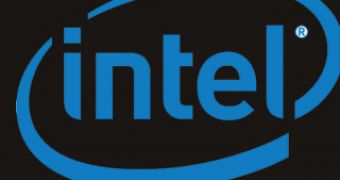Intel's Atom processor project, formerly called Diamondville, strikes the low-cost notebooks market. The low power chip called Atom processor is especially designed for that class of inexpensive notebooks that are called 'netbooks' by Intel and others. The machines are made for the consumers from the emerging markets, first time buyers, and also for that part of the market that wants to complement the existing performance with low-cost computers.
As the market is dominated by Asustek Eee PC, Intel has to strike hard to make a good entrance. That's why there are more than 25 Atom-based notebooks in the works. Also some models for multinationals PC vendors are included in the offer. The average price for a unit is situated between $250 and $300, but Navin Shenoy, general manager of Intel's Asia-Pacific operations, said that there will be some "slightly richer configurations that get up to $350".
The Atom processor won't be able to do too much, but it will be enough for Internet browsing or sending e-mails, Shenoy said. The chips will be similar to Intel's Pentium M series launched in 2003. That means their speed will reach 1,8GHz, which is not that slow after all. It is not an Intel Core 2 Duo, but it will do the trick.
The notebooks are expected for launch by the middle of this year. Vendors rushed to build the chip into low-cost notebooks, having as example the success that Asusteck's Eee PC had on the market. Yet, there are some skeptics that do not believe in such a great demand for low-costs notebooks as replacements for some more expensive PCs or as secondary computing devices for high-performance computers.
Bryan Ma, the director of personal systems research at IDC Asia-Pacific expressed his belief that the impact of the low-cost notebooks on the market will be a small one, as the consumers are interested rather in performance and features. According to his opinion, the price is not the best way of selling these computers. He has a reputation of a skeptic, and we are more attracted to believe that Intel made its homework well enough.
Shenoy also presented some features for these models. Their screens will be sized between 7 and 10 inches, and some models will have screens that will allows users to make them swivel and lay flat against the keyboard, transforming the netbook into a tablet PC. The storage will be either a hard disk or a solid state drive using flash memory. Battery life is expected to range from three to five hours. All the models will probably have Wi-Fi, no matter the appearance.
The low-cost notebooks will be shipped with either Windows XP or Linux, as Vista would be too expensive. On the other hand, we should notice that Microsoft announced that licenses for Windows XP won't be available after June 30, while these notebooks are planned to be launched around the same time. The deadline for XP licenses remains unchanged, but "There are probably going to be certain exceptions here and there," as Ma said.

 14 DAY TRIAL //
14 DAY TRIAL //